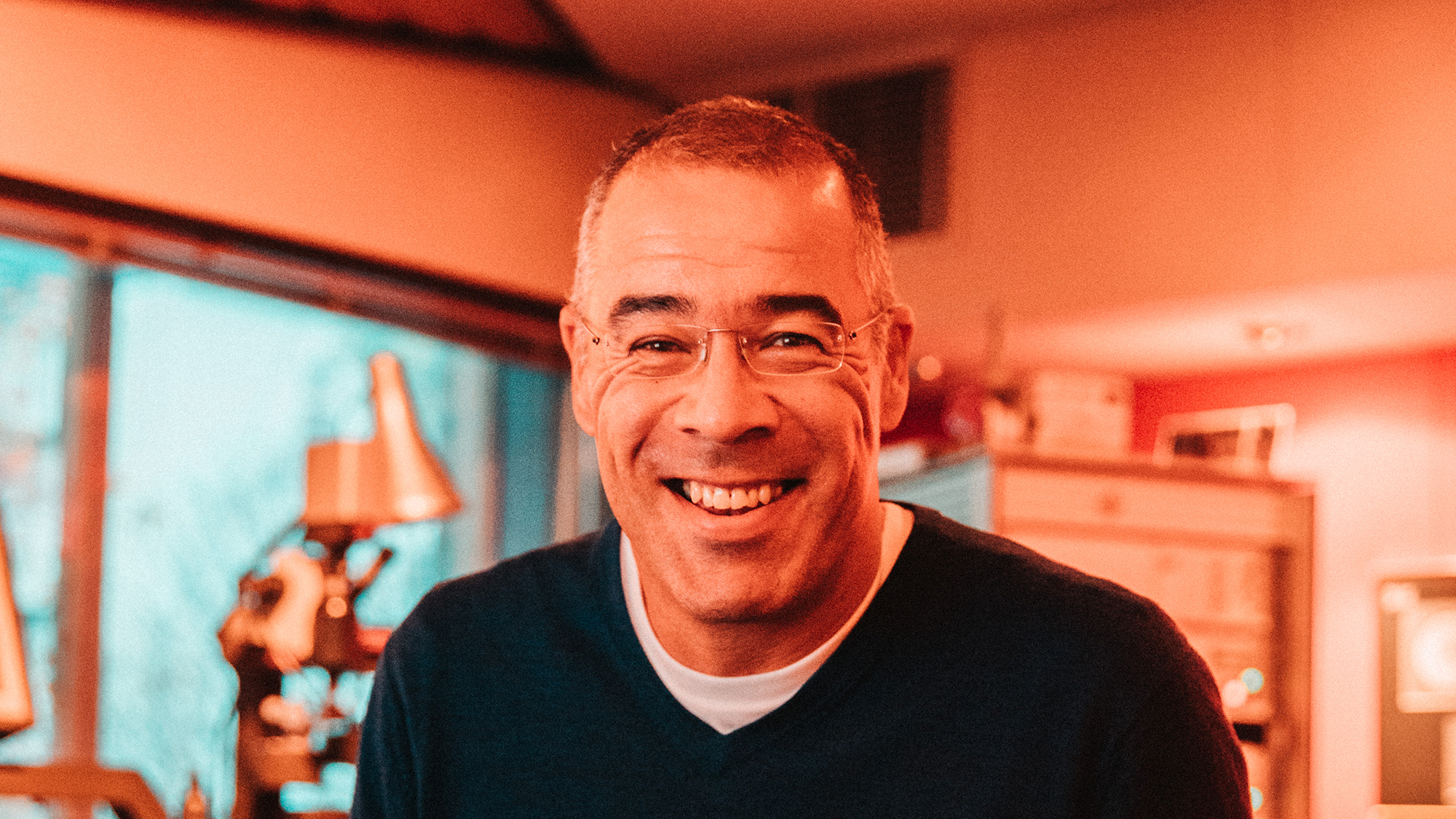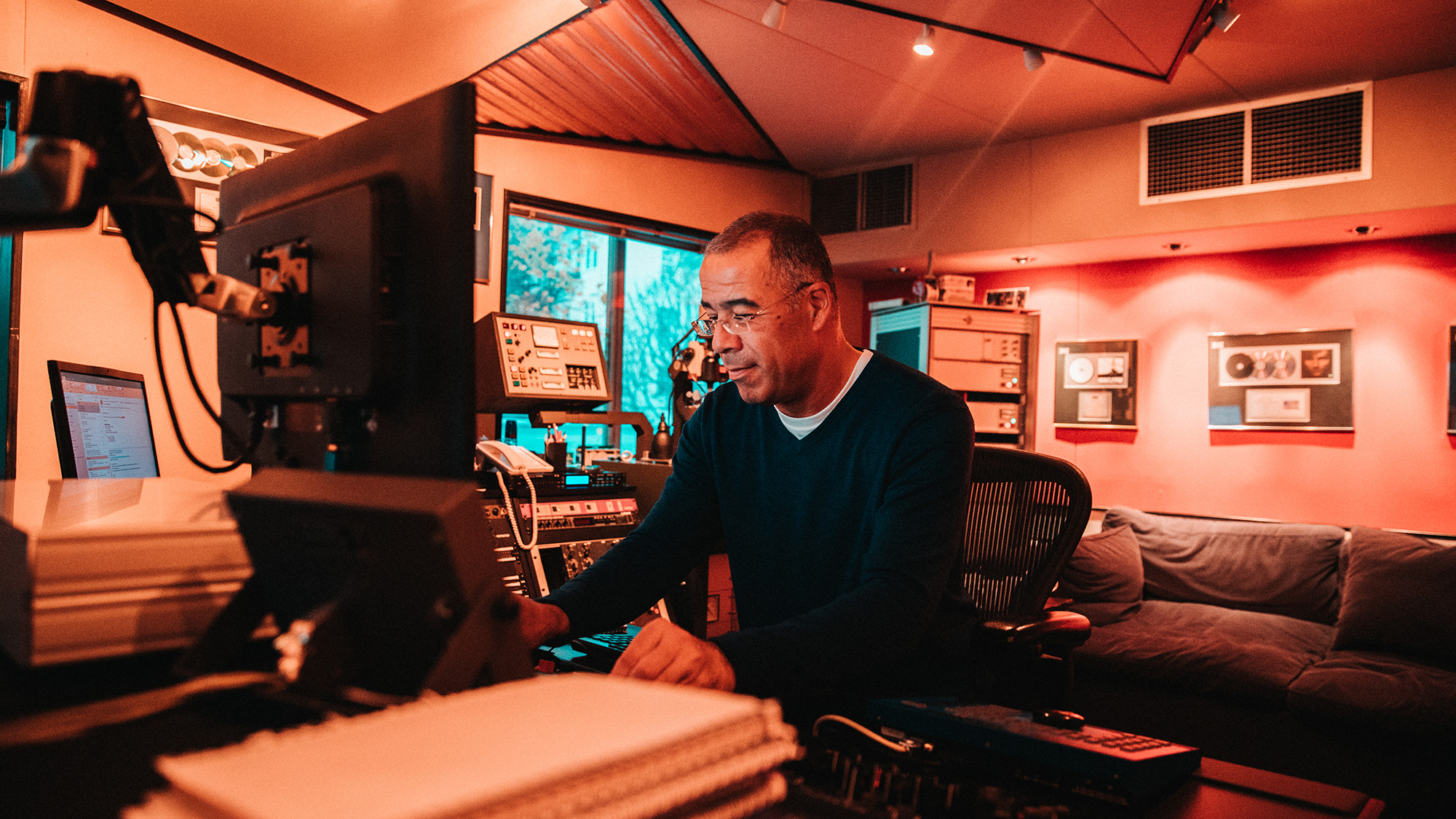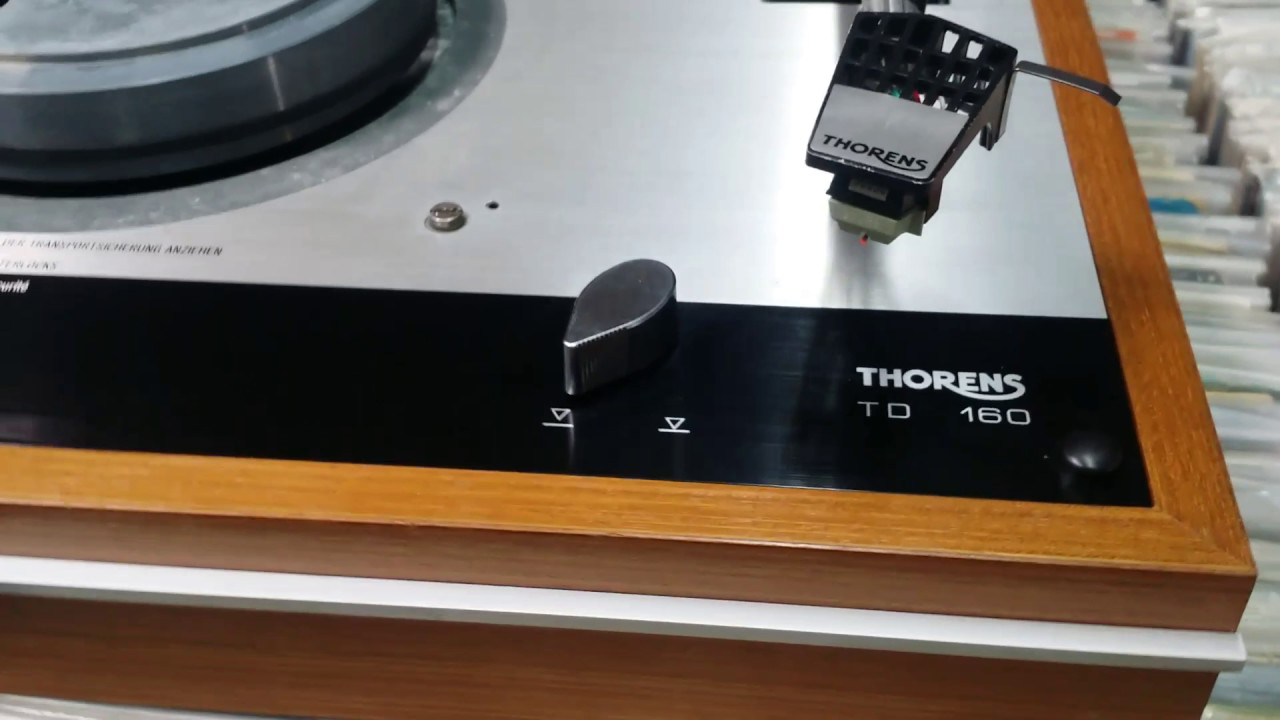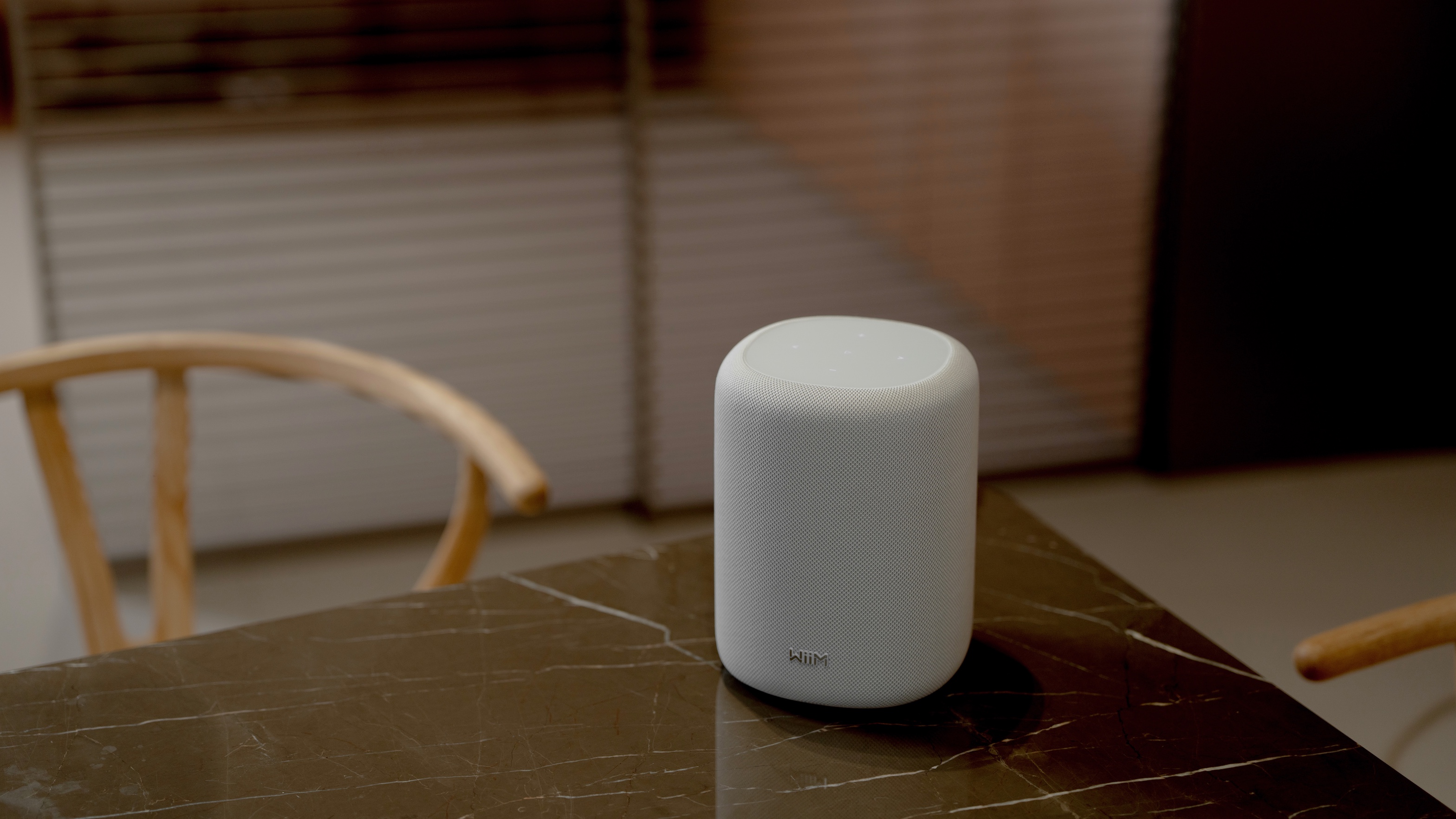How a vinyl record is cut at Abbey Road Studios
We spoke to mastering engineer Geoff Pesche who cut the lacquers for some of the best-selling records of all time

“One man’s apples is another man’s oranges with records,” says Geoff Pesche. “It’s a fickle mistress.”
The Abbey Road mastering engineer began his career as a motorbike messenger at Tape One Studios, working his way round some of the UK’s top studios – and cutting some of the biggest-selling records of all time, including New Order's Blue Monday and Dire Straits's Brothers In Arms – before setting up home in NW8.
Having worked through vinyl’s original heyday, its decline and second coming, there are few better placed than Pesche to tell us how our records get from the studio to the platter, and to discuss just why we’re still so obsessed with those thin black discs.
Records have always been cool
What Hi-Fi?: What has made vinyl such an enduring medium?
Geoff Pesche: I mean records have always been cool, haven’t they, and it’s good that mastering rooms like the ones we have here have never really jumped the disc-cutting gear. Because there was a time, in the late 80s, where vinyl really dwindled, and cutting lathes became sort of once-a-month things, but the advent of Record Store Day changed all that three or four years ago.
I mean, when I came here 13 years ago, I would be using the cutting lathe sort of once a week; well now I use it every day. I’ve got to recut something in a minute – I’m doing recuts again, because factories have so much to do they’re making mistakes, so you’re often re-cutting music, because the factories just can’t press enough records. There’s not enough factories left in the world.
WHF: Is most of your day-to-day now working with vinyl?
The latest hi-fi, home cinema and tech news, reviews, buying advice and deals, direct to your inbox.
GP: No, I would say as much as 30% – which is a lot considering we’re in the digital file age. What the record companies are doing, they’re looking for people with expertise at this to do these recuts – a lot of the records I’ve recut in the last couple of years, I cut the originals. So it’s almost the same job again. It’s a big part of it.
WHF: Talk us through a vinyl master: what do you get and what do you have to do?
GP: Well nobody wants to pay twice and have the CD files mastered and then start again without digital limiting for the vinyl, so we cut the record from the mastered CD files. But at the disc-cutting stage we just add some de-essing, and you can’t make a record as loud as you make a CD, there’s got to be volume adjustments. For me it’s mainly de-essing from the CD files; that’s how I do it. I don’t do any half-speed, that’s down to Miles [Showell].
WHF: Miles said to us that a half-speed master played at 45rpm is pretty much the ultimate for vinyl. Does that ring true for you too?
GP: Well it depends on many facets. It depends on the cut, obviously, and the processing; if the processing isn’t up to it then you’re not really going to notice the difference. As far as I’m concerned, it’s not worth twice the price – because it takes twice the time so it costs twice as much to do – but there’s a niche market for it out there, as Miles has proven, who think it’s worth double the investment. Personally I don’t, but that’s why I don’t do it, because I’ve not really ever championed it.
WHF: So what would you say in terms of things like heavyweight vinyl?
GP: Again, 180-gram pressings… It’s all about a moving, stable mass, isn’t it, so if the platter’s stable then in theory if a heavier disc doesn’t move when it’s on the turntable then it should be better. But I’ve got almost floppy-disc pressings of records they’re so thin, and they sound absolutely amazing. I think it’s certainly more tangible, a heavier pressing, it feels like you’ve got a bit more for your money. But if everything’s good from the cut through the process, I don’t see how a 180-gram pressing can sound that much different to be honest with you. I think it’s a bit cosmetic.
MORE: The holy grail of vinyl: the art of half-speed mastering
Like a fluffy old armchair

WHF: So what are the most important elements of sound to get right on a vinyl master?
GP: With a vinyl record you can’t have excessive sub-sonic or ultra-sonic frequencies, you can’t get too bright, your vocal sibilance has got to be good, dirty esses – all of that has to be contained when you’re actually cutting it. If the recording’s clean, then the disc will be clean, but so much depends on the processing when it leaves here. If the processing isn’t right, you can have the best set of lacquers in the world, but if the factory drag it through the mire then it’s going to sound rubbish whatever we do.
So it’s more important for me to know where the record’s going to get processed a lot of the time than fine-tuning the cut, because with my experience I know there’s certain types of records where certain factories can benefit it or not.
WHF: So how much listening back is there?
GP: Well unfortunately no two records are ever the same. You put a CD into the computer and it pumps out the CD master and it’s done, but because no two bodies of work react the same within a lacquer cut it really is a bit trial and error. And it’s so subjective: you could listen to a pressing and think that’s fine, it’s got a few clicks on it, but to the man that’s involved in the record it’s like well, if it isn’t CD quality I’m going to shout and scream about this. One man’s apples is another man’s oranges with records. It’s a fickle mistress.
WHF: Another of those things some people tend to like about records, like the cracks and pops, is the fuller body.
GP: The reason people say, “Oh vinyl is so much warmer”, it’s the cutting system rolling off the top and bringing up the bottom. When you cut a record it doesn’t add any bottom to it, the cutting amplifiers roll off the top. So if you compare the CD at the same level to the vinyl cut, the CD will be brighter because it’s not gone through the cutting system. So when people say, “Oh yeah, oh the analogue warmth”, it’s actually the analogue knackering the top, but people like that. That’s part of the sound.
The amount that it actually does is quite radical. If you A/B the two, if you listen to the source file against the pickup, my mum would know the difference – the record is radically duller, generally. But in a nice way, not with all the top rolled off, but just smoother and more round, like a fluffy old armchair, compared with a brittle-sounding digital file.
And people make records warmer now, because most records now are made in smaller studios where they don’t have large studio monitors, so they can’t really hear the low end, so they put loads in. So when they bring them in for mastering there’s always tons of bass on the files, so we nearly always end up trimming the fat a bit. If you looked at my notes over a year you’d see all different stuff, but you’d see actually I’m rolling bass out of the music all the time to make it sound nicer in here.
WHF: So has the job you do changed a lot from using analogue tapes to digital files?
GP: Well the process actually is still the same. I still work in the same way but with digital machines. I have two computers that if you like are like two tape machines: one’s a player and one’s a recorder, with all the analogue kit I use for processing in the middle. And that’s how it was in 1980 except we had two analogue tape machines: one was playing the master, the desk was in the middle, then the EQ production master, which is now created in a digital workstation, was the other tape machine.
So I still work kind of old school, with old school kit, which is our crown jewels, really. We’ve still got this old stuff that they built the plug-ins around, but the hardware is infinitely better. If you can process your music through this, you’re doing it through stuff you can’t buy off the internet, because it’s old 1970s hardware.
WHF: Were there different pitfalls in the process doing stuff then to those there are now?
GP: Well it was real engineering. Now anyone can get something for recording – your phone will record a digital file and you’ll get a decent capture from it – you don’t have to go to a studio like here to record something properly, you can just buy a digital workstation for two grand and call yourself a recording engineer.
I think the craftsmanship has gone out of it a little bit, because the digital technology just lends itself to anyone recording things. So you can imagine how bad that can be. But people don’t come in here with trash, because it’s all stuff with some kind of budget, so people who’re making music in their bedrooms don’t come in here.
It all starts with the song

WHF: You cut the lacquers for Blue Monday, and that obviously was a surprise for everyone…
GP: And a surprise for me. You don’t know how many records the record you’re cutting is going to sell. I’ve had people come in here and tell me that I did a record for someone else on their label and it sold 35 copies – 35, not 35 million. So you cut a record to the best of your ability, put the lacquers in the tin and off it goes, and then here we are years later and that record’s still being played in a nightclub.
But to be honest, whoever cut that record, that record would still be played in nightclubs now. It all starts with the song, doesn’t it? I was just lucky enough to cut two sets of that one afternoon and people still ring me up and ask what the signal path for it was and all of that business. I’m not taking away my ability for cutting a record, I did it to the best of my ability, but really I think whoever cut that was lucky to a degree.
WHF: Did you know you were lucky as soon as you heard it, then?
GP: No, I thought this is great, this is very different, but I didn’t really know much about New Order at the time. For instance, I did that record at a place called Tape One, where I trained, and a few years later when I left in 1987, the last record I did was Enya, Watermark. That was the last album I mastered there, and I was on my own because it was my leaving do down the pub, so I got that done and I think that record sold about 10 million. So the 10 million people who bought that record, they think it sounds great.
You get these projects because of the other records you’ve done, that’s how it works, so would you do it any different, on the day you were leaving to the day you first started? You wouldn’t, because you’re professional about it and you want a record to sound the best you can, but you just never know. Back then when the mechanical units sold well, you never knew.
With vinyl records sometimes, if you were cutting three or four sets to furnish different factories at the same time you would think to yourself, hmm, this is going to sell a few because they’re sending it to different factories. A colleague and I cut 15 sets of Dire Straits Brothers In Arms over a weekend, the lacquers went to 15 different factories around Europe. And that’s one of the biggest-selling albums of all time, in album sales that’s up there with Thriller, isn’t it? I’ve never cut that amount of anything since, or know of anything that’s been cut.
I mean, I would imagine some of the Pink Floyd records, Dark Side Of The Moon, or Simon & Garfunkel or Rumours, those records that sit in the charts for years and years and years and years, they have been cut umpteen times because the metalwork wears out in the factory and they need to press some more. But the guy who cut Rumours, he had no idea how many records that was going to sell. He probably thought it’s Fleetwood Mac, they’re probably going to do a few, but he never knew what the sales were going to be.
The best hi-fi on my road

WHF: In terms of your own listening habits, what kind of music do you listen to?
GP: I listen to what my sister calls elevator music; I listen to mainly instrumental music, smooth jazz. I listen to a radio station called Smooth Jazz Mix New York, which just plays Pat Metheny, George Duke and Herbie Hancock, all that kind of music. So I don’t listen to music at work that I would listen to on my iPod on the beach, so that means I can still be a music fan, which is great.
When you listen to music in here for work, you’re not listening as you would do for pleasure, you’re listening for sonic balance and what’s missing. I don’t listen to records that I buy and think there’s too much bass on that, I like the tunes, I switch off – you have to otherwise you’d just drive yourself mad.
WHF: And how do you listen? Do you listen to a lot of records and CDs as well as radio and digital?
GP: I’ve just stopped buying CDs, actually. It has to be a real case in point for me to buy another CD, but I’ve started buying vinyl again. I upgraded my turntable last year and I’m buying vinyl that I missed each month – eBay’s my friend, I’m buying three or four albums each month.
I’ve got a lot of music at home and I can’t have much more really, but I don’t stream. I’ve got a Sonos in the kitchen for digital radio or my iTunes, but I listen to CDs, digital radio or vinyl records at home.
WHF: You said you’ve just upgraded your turntable: what kit do you use at home?
GP: I’ve probably got the best hi-fi on my road, because of the nature of my job. I’ve got a nice vintage Thorens TD160, which has all been refurbed, with a nice cartridge on it; I’ve got an old Technics transistor amp from the 80s, which sounds beautiful; and an Arcam Alpha 9 CD player, which was very expensive; and B&W monitors, floorstanders, big ‘uns. So yeah, the windows shake.
WHF: Just to finish, can you pick out a few favourite records you’ve worked on?
GP: Pulp, Different Class – I’ve got a nice platinum disc up on the wall there for that – that record always makes me smile. Loose Ends, So Where Are You?, a 1980s UK soul album that was top of the RnB charts; they’re from Hackney, I’m from Chalk Farm, so it was quite a London alliance. The Bluetones, Expecting To Fly… I mean if you look at Discogs, I’m proud of all of it really.
I like British bands to do well. I like it when Robbie Williams – I’m not a Robbie Williams fan – but I like it when Robbie Williams or Ed Sheeran is top of the chart, because we’re prolific for a small island. Especially when we, as they say, break America – I think that’s great. So I like to work on good British pop records, and I’m proud of all of those I’ve done.
MORE:
